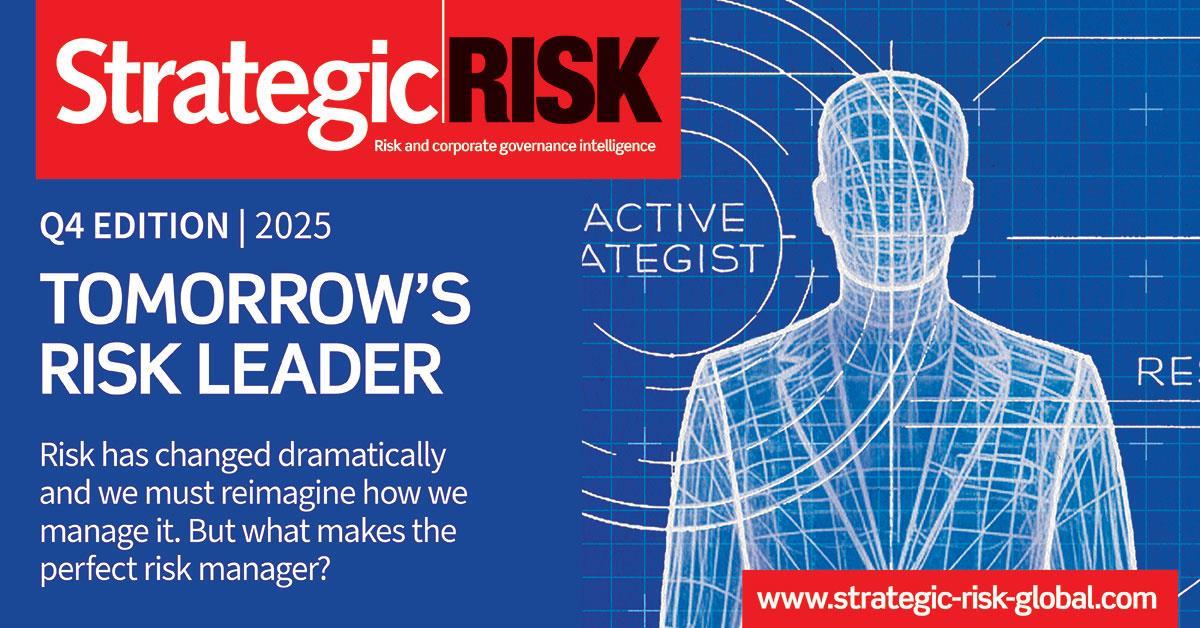Electric vehicles may be the spark, but lithium-ion battery risks run deeper. At Airmic 2025, Marsh’s Alistair Schuberth gave a briefing on what risk managers need to know
Lithium-ion battery risks are often dismissed by businesses who assume they don’t apply unless a fleet of electric vehicles (EVs) is in use. But this misconception can blindside organisations to hidden threats.
“I still routinely sit with clients and we talk about lithium-ion battery risk. And they instantly dismiss it because they don’t run electric cars or they don’t run electric lorries,” said Alistair Schuberth, risk partner at Marsh Corporate, UK, speaking at the Airmic conference. “When we raise it in the context of other devices that may exist within their business, their eyes start to go a little bit wider.”

From vapes to forklifts to solar panel storage, lithium-ion batteries are now embedded across organisation, often without central oversight. Fires, supply chain disruptions, and liability issues are all on the rise.
The risks: thermal runaway and beyond
While media headlines focus on dramatic EV fires, it’s important to distinguish between battery types and use cases.
“Generally no one is saying lithium-ion batteries in and of themselves are inherently dangerous. The thermal runaway is the big problem in terms of property damage,” Schuberth clarified. This refers to a chain reaction caused by battery damage, faulty software, overcharging or manufacturing defects.
Although EV fires get the headlines, incidents can involve mobile phones, scooters, power tools and even solar installations. Charging practices are particularly sensitive. Fires often occur during charging, when battery control systems fail or are bypassed.
Poor storage is another issue. Batteries can fail and spark fire if stored incorrectly, particularly in bulk. And the consequences may not be limited to property: cable trip hazards, electrocution risks, supply chain disruption, reputational damage and regulatory scrutiny are all potential outcomes.
Where lithium risks are hiding
The first step is identifying where lithium-ion batteries are already in use:
- Consumer electronics: mobile phones, laptops, vapes, scooters, e-bikes
- Vehicles: EVs, company car fleets, forklifts, ride-on units
- Energy storage: battery units connected to photovoltaic (PV) solar panels
- Critical machinery: robotics, drones, warehouse equipment
The risk manager’s job is to surface and catalogue this use. Location, storage method, quantity, battery type and charging behaviour all matter.
Storage and charging: red flags and best practice
Insurer expectations are evolving quickly. While battery concerns were once niche, they are now mainstream for risk engineers conducting site visits.
“Five years ago, you say you’ve got electric vehicles… you won’t raise an eyebrow in an inspection… Now, I’m starting to see a lot more questions forthcoming from engineers,” Schuberth said.
Risk managers should take care with where batteries are stored and charged. Common red flags include:
- Batteries stored near fire exits or escape routes
- Charging units propped on combustible materials (e.g. wooden pallets)
- Devices charging unattended overnight
- Accumulated devices stored without fire separation
Insurers typically want at least two metres of clearance from combustibles, and for bulk batteries, 60+ minutes of fireproof enclosure. Ideal storage is outdoors, away from the main building.
For bulk storage, insurers often expect fireproof enclosures and ideally, a “sacrificial building” isolated from core assets.
Inspections and reporting culture
A regular inspection regime is essential. But it must go beyond box-ticking.
Building an open reporting culture is key. If a battery-powered vehicle has been in an accident or knocked, it’s important staff feel safe reporting the incident so that potential damage to the battery can be investigated and risks mitigated.
Visual checks for damage, bulging, or battery alerts are a minimum standard. In some cases, off-gas detection systems (which sense early chemical release before visible smoke) can offer early warning. These can be integrated into fire alarms and are relatively low-cost.
Business continuity and supply chain shocks
Fire is not the only concern. Business continuity and supply chain resilience are just as crucial.
Many battery components come from a small number of global manufacturers, largely based in China and South Korea. Schuberth cited past shocks from the Ukraine conflict as evidence of how quickly disruption can cascade. “I had no idea so much from the automotive industry came from Ukraine,” he admitted.
A single battery failure could immobilise machinery and delay operations—especially if replacements have multi-month lead times. Risk managers should identify dependencies, map supply chains (ideally using automation tools), and develop continuity plans.
Liability and legal obligations
Under the Regulatory Reform (Fire Safety) Order 2005, businesses are legally required to maintain up-to-date fire risk assessments. Yet many are still overlooking lithium-ion battery risks.
“Most of the organisations I work with, I don’t think they have up-to-date fire risk assessments,” Schuberth said. “It doesn’t have to be a major point, but it should acknowledge the presence of lithium-ion batteries and show how you’re managing it.”
Insurers are also scrutinising compliance with DSEAR (Dangerous Substances and Explosive Atmospheres Regulations) if batteries are being charged indoors. Even without enforcement, the message is clear: proactive documentation matters.
The forgotten risks: e-scooters, vapes and grey space
Micro-mobility and consumer items pose a different kind of problem: invisibility.
Staff may bring in e-scooters or rent them for the last mile, parking them in back corridors or near fire exits. These small devices are often powered by poor-quality or aftermarket batteries with no verifiable safety standards. The risk multiplies when multiple units are stored or charged together.
Even waste disposal creates issues. “Disposable vapes going into a compactor is a big problem for the waste industry,” Schuberth said. Crushing damaged lithium batteries in waste streams can cause fires, particularly when mixed with flammable material.
How to respond: practical steps
- Know where batteries are used: Create an asset inventory, even for small devices.
- Review storage and charging protocols: Keep batteries away from combustibles, and never charge overnight unattended.
- Update fire risk assessments: Include lithium-ion risks explicitly.
- Train staff and encourage reporting: Build a culture of openness around equipment damage.
- Install early detection: Off-gas sensors can detect failures before fires erupt.
- Prepare continuity plans: Account for the impact of fire or loss of critical battery-dependent kit.
- Audit your supply chain: Understand where key components originate and plan alternatives.
A new era of scrutiny and insurer expectations
Schuberth warned against treating battery risks as new or obscure. While lithium-ion technology may feel cutting-edge, its risk profile is now well established. Insurers want to support the green transition, he explained, but also want to ensure appropriate controls are in place to prevent large-scale property losses like warehouse fires.
Early engagement with insurers and brokers is vital, especially when installing new infrastructure like EV chargers or solar panels. Demonstrating informed, proactive management can make the difference between affordable cover and declined quotes.
While UK legislation is catching up (a Lithium-ion Battery Safety Bill is progressing through Parliament), it is risk managers who must lead the charge now.
From city centre pedicabs to logistics fleets and warehoused power tools, lithium-ion battery exposure is everywhere. Managing it well can reduce the chance of fire, protect supply chains, and demonstrate organisational resilience to insurers and stakeholders alike.
“Insurers want to enable you to be able to do this… but what we all want is to make sure the building doesn’t burn down,” Schuberth said in closing.
BLOG: Airmic Conference 2025 Daily News Summary

Stay tuned - live reporting from the Airmic Conference this week - all in one place
- 1
- 2
- 3
- 4
- 5
- 6
- 7
- 8
- 9
- 10
- 11
 Currently
reading
Currently
reading
Airmic 2025: The truth about lithium-ion battery risks and how to manage them
- 13
- 14
- 15
- 16










































No comments yet